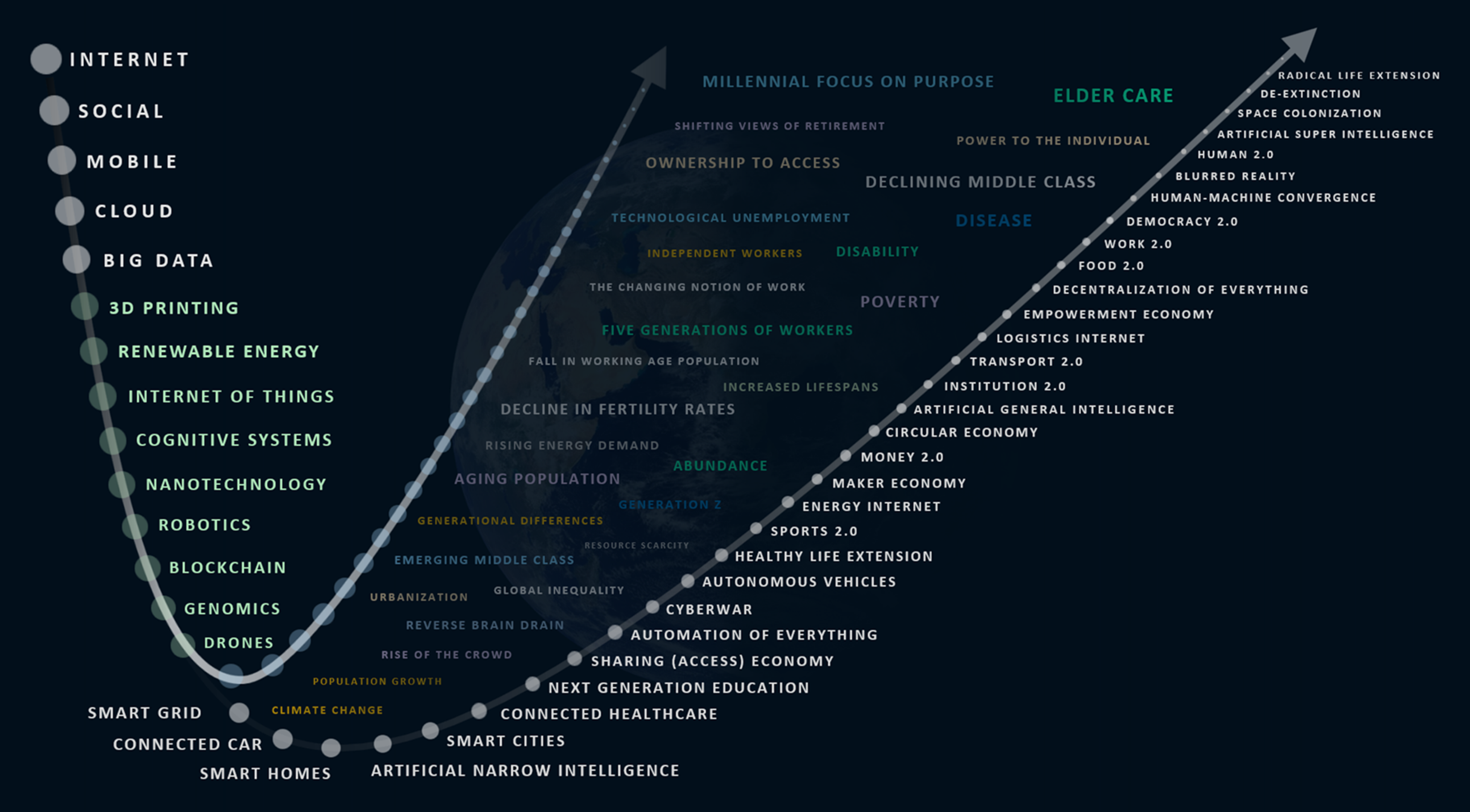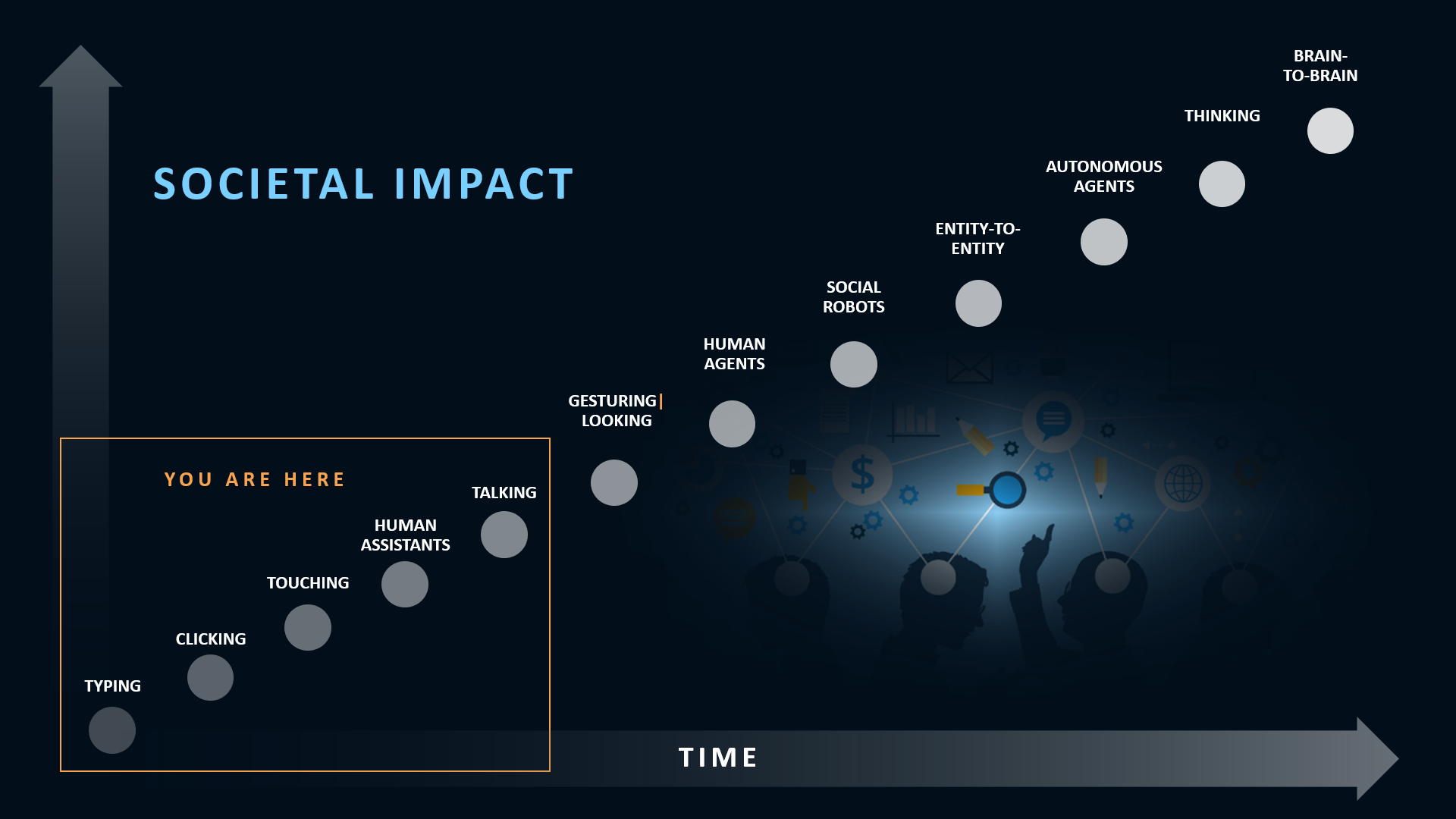
The Metaverse is now one of those buzzwords we can expect to hear about for some time to come. With that in mind, I just finished reading my latest book titled The Metaverse Handbook. The book covers the following:
Continue reading
The Metaverse is now one of those buzzwords we can expect to hear about for some time to come. With that in mind, I just finished reading my latest book titled The Metaverse Handbook. The book covers the following:
Continue readingI have long believed that the way we interact as humans is on an accelerating journey towards massive change. Whether the next interaction frontier involves the brain or a broad Metaverse vision, it is almost certain that how we interact will change. There have been several waves of change to our interaction paradigm through at least three stages of transformation. However, the next transformation will alter many long-standing beliefs, and as we explore possibilities, emerging scenarios can be very illuminating.
Continue readingThe current buzz surrounding Web3 represents the convergence of multiple domains. In the past, Web 3.0 represented the semantic web, which focused on making Internet data machine-readable. Web3 has moved to a broader place, including the Metaverse and decentralization. The metaverse is described by Wikipedia as a network of 3D virtual worlds focused on social connection. The metaverse itself is a huge buzzword these days, but its origins date back to Author Neil Stephenson when he coined the term in Snow Crash, a dystopian cyberpunk novel published in 1992. In the novel, the metaverse is described as a 3D shared virtual world – a whole universe of shared virtual spaces seemingly linked together with an ability to teleport between them. Games like Minecraft and Fortnite are close to the vision that he foresaw. You can explore more on the metaverse here.
Continue readingI would define reductionism as the concept of depicting something – or rather mirroring or simulating something – that can pass as a useful and entertaining copy of the real thing.
Gerd Leonhard – The Great Reduction
Yesterday I posted about the Metaverse and shared a video that described how Norway envisioned a future where the Metaverse provided endless possibilities, improving the lives of generations to come. Having seen the post, Futurist Gerd Leonhard shared one of his recent posts with me.
As he and I have discussed in the past, the future is all about balancing the opposing forces of innovation. This has always been true about innovation, reflected in examples like fire positively transforming the world, but also burning down villages – and so it is with the metaverse. The quote and related post above positions the counterpoint to the Norway video. I’ve included a separate video from Gerd’s post below that underscores his message.
Continue readingOnce a niche concept beloved of tech enthusiasts, the idea of a centralized virtual world, a “place” parallel to the physical world, has careened into the mainstream landscape this year, as epitomized by Facebook’s decision in October to rebrand as Meta
Peter Allen Clark – The Metaverse Has Already Arrived. Here’s What That Actually Means
That quote from a recent article speaks to the growing buzz around the metaverse. As the article states: “the promise of the metaverse is to allow a greater overlap of our digital and physical lives in wealth, socialization, productivity, shopping and entertainment. Essentially, the metaverse is an evolution of the current Internet. Although today’s version involves goggles, tomorrow it’s all about glasses. John Riccitiello, CEO of Unity describes the use of glasses this way: “You’re walking by a restaurant, you look at it, the menu pops up. What your friends have said about it pops up.”
Continue readingI am constantly searching for content that will provide insights to those that read my posts. I came across this infographic on wearables and wanted to share. Here is an abstract that describes the visual.
Continue readingIn early 2019, I described the Three Focus Themes for the year. They were Acceleration, Convergence, and Possibilities. Little did I know that one of those themes would factor so prominently in 2020. In a recent Presentation, Mehlman, Castagnetti, Rosen & Thomas – a full-service, bipartisan government relations firm – describes 2020 as the year where forces already in play experience a great acceleration. One of those forces is mixed reality.
Continue readingThe National Retail Federation (NRF) kicked off it’s annual event this week, and with it comes an opportunity to consider the future of retail and the type of changes we might expect. Colleagues at Tata Consultancy Services (Kevin Mulcahy, Bill Quinn, and April Harris) pulled together their thoughts ahead of the event. You can explore the future of Retail via this Article, and/or the short video below.
It is no longer a surprise to witness something progress exponentially. Add to that list virtual reality and its near term application in retail, games, sports, and other. As it progresses, the way we interact transforms slowly – and then suddenly. This is a great example of a building block on the science and technology curve spawning a scenario or shift on the future scenario curve – BLURRED REALITY.

The World Economic Forum estimates 65 per cent of children today will end up in careers that don’t even exist yet.
“Individuals and companies that succeed in the future will be those who adopt the philosophy of lifelong learning,” says Nigel Heap, managing director of Hays UK and Ireland. “Businesses that facilitate the resources, tools and time to support learning will not only have employees who are more engaged, but their business will be better placed to face challenges and remain innovative.”
From the Future of Learning
I’ve attempted to link innovation and our well-being via a visual that I’ve shared previously in this forum. It allows us to envision our emerging future and leverage story telling techniques to describe it in ways that become actionable. One of the most critical aspects of this emerging future in my humble opinion is the future of learning and education.
Reimagining Education
Our education system must prepare individuals for the world that is, not the one that was. It must ensure that those educated embody the qualities and competencies essential to life in a society very different than our industrial past. Among them are: creativity, critical thinking, innovative thinking, curiosity, social intelligence, a collaborative spirit, adaptability, entrepreneurial spirit, connecting dots, and knowing how to ask the right questions. Our need for life-long learning and unlearning drives us to reimagine education and transform through combinatorial innovations that leverage AI, Mobile, Cloud, Virtual Reality, Augmented Reality, Big Data, and more. Some of the facets of next generation education include:
Last week, I presented on the future of sports at a fund raiser for the Rutgers University Women’s Soccer team. A local Article on the topic captured the high-level themes, but for those interested, here is the full presentation along with two very good reports I tapped into from Delaware North on the future of sports: The Future of Sports 2016 Report and The Future of Sports 2015 Report.
Back in 2013, as Smartphone use was growing, I wrote about Next Generation Experiences; viewing customer experience through a lens of constant change, where failure to address foundational elements meant falling further behind. Since then, our mode of interaction witnessed a third transformation, as touch became a critical piece of our everyday experiences. Now, we find ourselves approaching the next significant change in interaction paradigms: the Fourth Transformation driven by mixed reality.
